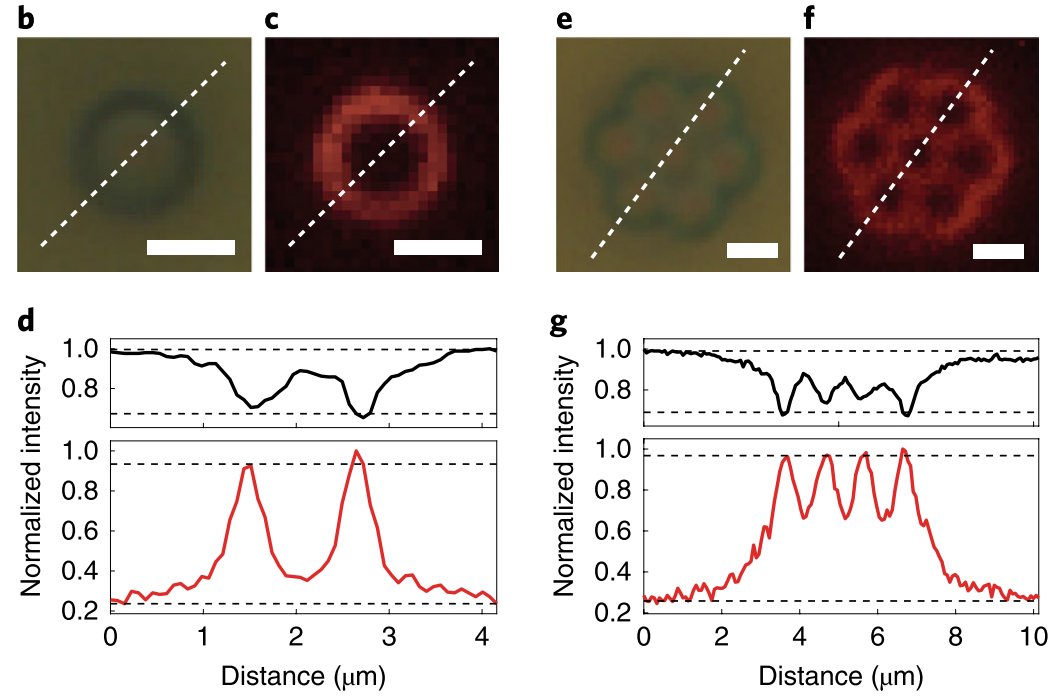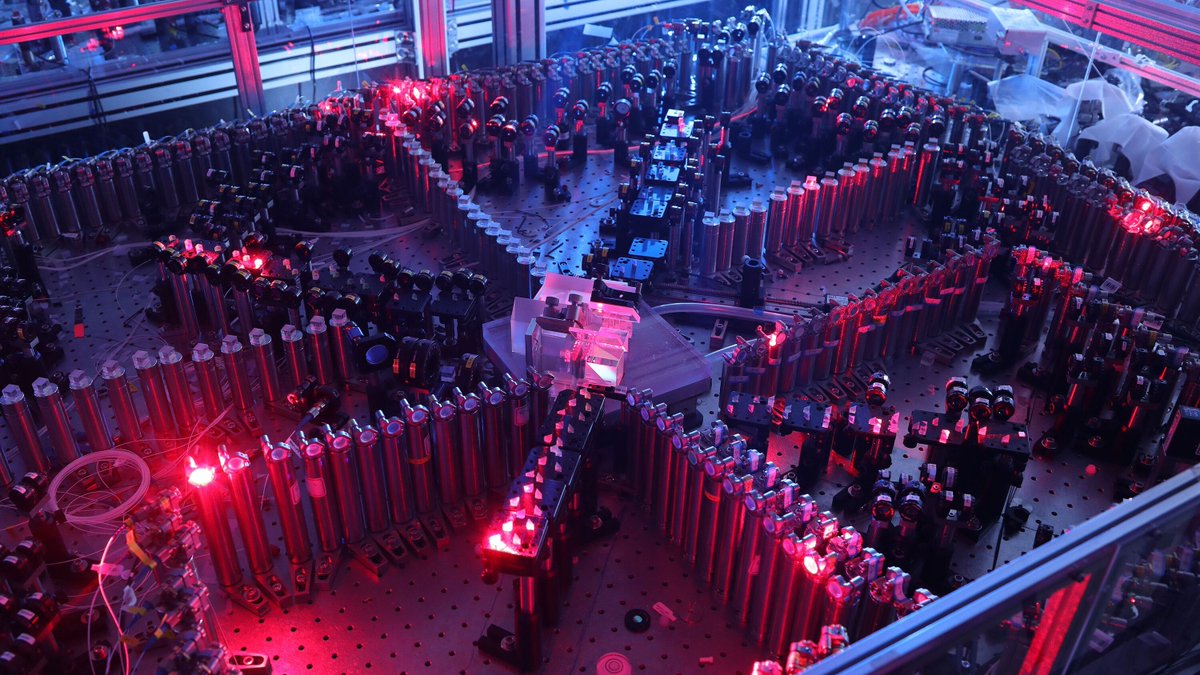
Hey #optics and #photonics twitter
It's time again for the 2nd annual #top10photonics thread, where I compile my own #top10 best photonics papers list of the year!
See here for last year's thread:
A thread 👇
It's time again for the 2nd annual #top10photonics thread, where I compile my own #top10 best photonics papers list of the year!
See here for last year's thread:
https://twitter.com/Orad/status/1211330649866620933?s=20
A thread 👇
Same disclaimers as last time:
1. These aren't just papers that were published in 2020. They are papers that were added to my library in 2020. Some are a little older — some are a lot older. All are interesting or exciting to me in some way.
1. These aren't just papers that were published in 2020. They are papers that were added to my library in 2020. Some are a little older — some are a lot older. All are interesting or exciting to me in some way.
2. I reiterate - TO ME. This list is highly subjective, and is mostly about what captured my imagination most, not about what will make the biggest impact, or what is most worth funding. The order is mostly arbitrary too. This is just for fun :)
3. Once again I am NOT including any of my papers, or any from my current or former groups. If you're curious about what I do, drop a proverbial tip in my jar and peruse my publication list here:
reshef.ca/publications/
reshef.ca/publications/
And while I have your attention, register for #POM20ja, happening in 2 weeks. (It's free!) It's a completely reinvented @PhotonicsMeetup, and it promises to be a great time!
Now, on to the main event!
Now, on to the main event!
# Honourable mention (since it's not original research):
Phys. Today 68, 44 (2015)
I found this one on twitter. It's a transcription of a round-table discussion about the future of the laser between the all-time greats (Townes, etc) that happened in 1972!
Phys. Today 68, 44 (2015)
I found this one on twitter. It's a transcription of a round-table discussion about the future of the laser between the all-time greats (Townes, etc) that happened in 1972!
https://twitter.com/PhysicsToday/status/1261694615264133121
#10 Presutti, F. & Monticone, F. Focusing on bandwidth: achromatic metalens limits. Optica 7, 624 (2020). doi.org/10.1364/OPTICA…
It's not *sexy*, but it's important: a rigorous treatment from @FMResearchGroup on the bandwidth limitations of metasurfaces.
It's not *sexy*, but it's important: a rigorous treatment from @FMResearchGroup on the bandwidth limitations of metasurfaces.
I learned quite a bit, especially about fundamental limits in optics (and not just the time-bandwidth product). It's also notable that quite a few experimental devices have already approached their theoretically derived limit... makes you think about what paradigm is next...
#9 Pierangeli, D., Marcucci, G. & Conti, C. Large-Scale Photonic Ising Machine by Spatial Light Modulation. Phys. Rev. Lett. 122, 213902 (2019). doi.org/10.1103/PhysRe…
This is a wonderful (scalable!) new type of optical computation! Love to see it
This is a wonderful (scalable!) new type of optical computation! Love to see it
#8 We've already seen filters for wavelength, polarization, or (most recently) incident angle. But how about *coherence* filters?
T. Frank et al. Discriminating between Coherent and Incoherent Light with Planar Metamaterials. Nano Lett. 2019, 19, 10, 6869
doi.org/10.1021/acs.na…
T. Frank et al. Discriminating between Coherent and Incoherent Light with Planar Metamaterials. Nano Lett. 2019, 19, 10, 6869
doi.org/10.1021/acs.na…
I like this paper because it demonstrates a really novel application for metasurfaces, which for ages kept being pitched as "flat lenses." It really shows the power of the platform. (I wonder if they discovered this effect accidentally 🤣)
#7 If you're active on #photonics twitter, then you might have seen this one before:
Savo, R. et al. Broadband Mie driven random quasi-phase-matching. Nat. Photonics 14, 740–747 (2020) by @romolo_savo and @rachel_grange of the @ONG_ETH group:
doi.org/10.1038/s41566…
Savo, R. et al. Broadband Mie driven random quasi-phase-matching. Nat. Photonics 14, 740–747 (2020) by @romolo_savo and @rachel_grange of the @ONG_ETH group:
doi.org/10.1038/s41566…
This paper combines my favorite #photonics things — nanoparticles, nonlinear optics, phase-matching tricks, and gorgeous SEMS. I also love that it's cleverly fishing its favorite properties from different length scales: resonant NLO enhancement, broadband quasi-phasematching
#6 Xiao, Y. et al, Planck spectroscopy. arXiv:2012.05892 [physics.optics]
arxiv.org/abs/2012.05892
Simple idea with a powerful application. And a clever name! This is the type of measurement method that may become a standard in the field. As expected from the @KatsGroup!
arxiv.org/abs/2012.05892
Simple idea with a powerful application. And a clever name! This is the type of measurement method that may become a standard in the field. As expected from the @KatsGroup!
I mean, *this* is the entirety of the measurement apparatus~!!
Reminds me of z-scan in its simplicity.
Reminds me of z-scan in its simplicity.

#5 M. van Niekerk et al. Two-dimensional extreme skin depth engineering for CMOS photonics. arXiv (2020). arxiv.org/abs/2005.14265 Here, the authors use the "skin-depth engineering" concept to increase or decrease coupling between neighboring waveguides at will. 



This paper is the spiritual sequel to @JahaniSaman and @zjacob_group's 2018 @NatureComms paper here
dx.doi.org/10.1038/s41467…, which was a clever idea that imho didn't get enough attention. Perhaps this publication will push the idea over the edge.
dx.doi.org/10.1038/s41467…, which was a clever idea that imho didn't get enough attention. Perhaps this publication will push the idea over the edge.
#4 Turn your microscope into a dark field scope in 3 easy steps!
The proposal is to use a substrate with its own built-in angularly-selective fluorescence to convert any microscope into a dark field microscope. Incredibly simple, and the images are super convincing:
The proposal is to use a substrate with its own built-in angularly-selective fluorescence to convert any microscope into a dark field microscope. Incredibly simple, and the images are super convincing:

Chazot, C. A. C. et al. Luminescent surfaces with tailored angular emission for compact dark-field imaging devices. Nat. Photonics 14, 310 (2020).
nature.com/articles/s4156…
nature.com/articles/s4156…
#3 High-Q Quasi-BIC metasurfaces.
From my metamaterials-perspective, BICs dominated the year, with notably excellent work from Yuri Kivshar's team and collaborators.
Here I'm choosing to highlight the paper with the highest Q-factor yet, Q~20,000:
From my metamaterials-perspective, BICs dominated the year, with notably excellent work from Yuri Kivshar's team and collaborators.
Here I'm choosing to highlight the paper with the highest Q-factor yet, Q~20,000:

It feels like we have finally found a path forward with which we will be able to challenge integrated high-Q microresonators.
Liu, Z. et al. High-Q Quasibound States in the Continuum for Nonlinear Metasurfaces. Phys. Rev. Lett. 123, 253901 (2019):journals.aps.org/prl/abstract/1…
Liu, Z. et al. High-Q Quasibound States in the Continuum for Nonlinear Metasurfaces. Phys. Rev. Lett. 123, 253901 (2019):journals.aps.org/prl/abstract/1…
#2 U. Elu et al. Seven-octave high-brightness and carrier-envelope-phase-stable light source. Nat Photonics (2020).
nature.com/articles/s4156…
*SEVEN* octaves? I mean, come on, that range is absolutely bananas, from 340 nm to 40,000 nm~!!
nature.com/articles/s4156…
*SEVEN* octaves? I mean, come on, that range is absolutely bananas, from 340 nm to 40,000 nm~!!
There isn't a material that is transparent to that entire range, or a detector that works for that whole range...
And it's CEP stable? I can't even fathom.
And it's CEP stable? I can't even fathom.
#1 OK... you probably know where I'm going, since you haven't seen this paper yet on the list. This one made international headlines. I'm choosing to include it here because the experiment was just a tour de force. "100 mode interferometer, 2500 alignment paths". Jeezus. 

I'm talking, of course, about
H.-S. Zhong et al, Quantum computational advantage using photons. Science 370, 1460 (2020)
What a landmark paper.
science.sciencemag.org/content/370/65…
H.-S. Zhong et al, Quantum computational advantage using photons. Science 370, 1460 (2020)
What a landmark paper.
science.sciencemag.org/content/370/65…
I bet the authors were a *little* disappointed that they were just behind the Google paper in Nature last year, but that doesn't diminish this accomplishment. It also gives advisors the world-over ammo against students complaining about how hard it is to align their setup XD
So, what do you think? What papers should have made the list that I completely missed out on! Please share them below!
#top10photonics
And happy new year! I hope you all publish multiple Nature papers that can be featured here in 2021 :)
#top10photonics
And happy new year! I hope you all publish multiple Nature papers that can be featured here in 2021 :)
@threadreaderapp
Unroll please :)
Unroll please :)
Here's the thread unrolled, if that's more your jam:
threadreaderapp.com/thread/1344659…
threadreaderapp.com/thread/1344659…
• • •
Missing some Tweet in this thread? You can try to
force a refresh


